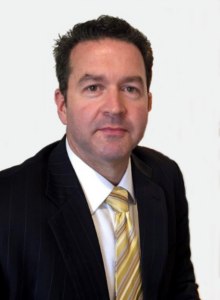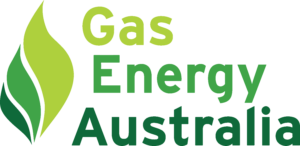The Voice of Brett Heffernan, CEO of Gas Energy Australia
This edition’s interview is the thoughts of Brett Heffernan, Chief Executive Officer of Gas Energy Australia (GEA), Brett Heffernan. Brett tells us how he is driving forward Gas Energy Australia with a new strategic plan, compelling facts and a solid media outreach.

GEA Today
It’s been a whirlwind first year with GEA. But it’s been worth the effort, with the Association well positioned over the last 12 months and focused on where we’re going next and how we’re going to get there. GEA has embarked on a substantial overhaul of its staffing, resource allocation, strategic priorities and engagement strategies. In both technical development and policy areas, GEA punches well above its weight. Members rightly value GEA efforts in this space. And for good reason. These efforts are well regarded because they actively involve the membership in committees and task forces. GEA is exceptionally well positioned in its engagement with relevant regulatory bodies, Standards Australia, government and non-government bodies. The Association is actively sought by those bodies for engagement, advice and input. These relationships and the ability to be involved in key decision-making ahead of decisions being taken is a credit to GEA. Likewise, GEA’s Policy and Research endeavours are comprehensive and credible, lending significant weight to the LPG sector’s need to be positively position in political, bureaucratic and public arenas.
As the new CEO, my focus has been to harness this exceptionally strong base and turn it into public recognition for the sector and influence political will. Greater emphasis was identified by the Board on honing these strengths and leveraging them into potent, persuasive agendas that influence opinions and outcomes. It is fair to say the entire gas sector – not just GEA – has been slow to embrace the opportunities that a decarbonising economy, and LPG’s stake in it, presents. While playing catch up, GEA’s core business has been geared to fill information gaps across political and public arenas using independent and authoritative factual data and messages.
GEA’s Strategic Plan
This year the GEA Board approved the organisation’s first Strategic Plan and Communications Strategy, informed by market research, substantive research and member engagement. Our four pillars underpinning this approach encompass:
- Political engagement
- Public engagement
- Third-Party Allies
- Membership
Our starting point has been facts. If you’re a community group you need only be armed with concerns. When you’re in industry body your facts, figures and arguments need to be bullet-proof. It’s the number one priority. In this effort, GEA has drawn on three research efforts.
We commissioned ACIL Allen Consulting to undertake analysis of the publicly available data on the gas industry’s direct and indirect economic contribution. That the sources are government bodies is critical. It means no-one can argue with it. The report showed the gas sector’s economic contribution at over $70 billion a year, with more than 241,000 Australian jobs hinging on gas. LPG alone underpins $3.6 billion a year and 15,500 jobs. This data, broken down by state, is essential in establishing the bona fides of the industry and its contribution.
Transitioning to Net Zero Gases
We also commissioned Frontier Economics to investigate the feasibility of the gas sector’s transition to renewable, net zero gases – the timeframe, the costs relative to electrification and the technical capacity to deliver on this commitment. What we got was a seminal blueprint detailing no fewer than eight pathways for LPG to decarbonise, embracing bioLPG, renewable LPG and renewable DME.
Eight months in the making, the rigour of this material and its applicability across multiple settings – from metropolitan and regional in-home cooking, heating and hot water; to commercial and industrial needs; agricultural applications and recreational uses stands our sector in good stead for years to come. In developing a clear, commercially viable and relatively easy path to not only net zero, but actual zero emissions fom LPG, the modelling also provides compelling insights on the relative costs and emissions profiles of gas use versus electrification.
Since briefing federal and state governments, opposition parties, government departments and agencies, GEA has had universal agreement for the role renewable LPG can play as part of Australia’s future energy mix. Our key focus over the year ahead is building on that engagement and, over the next couple of years, seeing bioLPG, renewable LPG and renewable DME officially recognised and certified as renewables gases. Over 2022-23 APPEA agreed to share its market research with GEA. This has allowed us to put together an informed government relations and public positioning approach.
Government Relations and Media Activities
Earlier in 2022 GEA made the decision to internalise our Government Relations activities.
This has been at the executive level with ministers, shadow ministers and their staff, as well as bureaucrats. This builds on the policy and research work done to date. Around this time we asked members to complete a Member Survey of activities covering operations at the local level. The plan is to compile this electorate-by-electorate information, combine it with the research piece, so we can be relevant at the local, state and federal levels. This makes us relevant at the political coalface in MPs’ electorate backyards, transcending party lines. It’s a bottom up and top down approach between the executive and grass roots levels. Communications is interwoven within all aspects of what GEA does – across political, regulatory, allied industry, public (media) positioning and membership engagement.
Over the last year, GEA has taken a decidedly proactive approach to media engagement. We’ve achieved mainstream coverage with every item we’ve taken to the media and now media are seeking us out for comment and information. But the measure of effective media use isn’t coverage. That’s easy. To be effective we need three things: Prominence, volume and being on-message. So far, we’ve ticked every box. GEA has achieved solid press, radio and online coverage with 638 news stories, with exposure measured at 554 million over the year. We also delivered a 100% return on the publication of all opinion editorials in mainstream metropolitan newspapers. Across the globe we’re all seeing the same issues and the same misinformation campaigns from ideologically-driven activists. The ability to share information, data and approaches is vital. WLPGA is an important conduit to facilitate that engagement and pull the various thread together into a cogent proposition.
